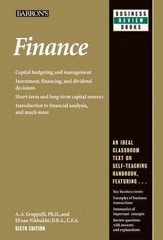Question
Question 1: Analyze the dividend policy of RIL for shareholders wealth maximization and advise on an optimal dividend policy to ensure shareholders wealth is maximized.
Question 1: Analyze the dividend policy of RIL for shareholders wealth maximization and advise on an optimal dividend policy to ensure shareholders wealth is maximized. Please discuss following questions in your response: - What type of dividend policy has RIL been following? (Constant payout, constant dividend per share, or long-run residual policy?) The constant payout approach is a dividend strategy in which a company determines a level of dividend payout and applies this to net income. Here, a certain percentage of profits is paid to the shareholders every year. But when profits decline, shareholders may become concerned, as the constant dividend payouts may affect the stock price. Companies prefer the constant payout policy because it indicates their ability to pay dividends. Firms smooth their dividend payments over time to try to maintain a stable dividend payout ratio. The long-run residual policy is intended to build trust in shareholders by offering to pay a regular, or even increasing, dividend; hence it signals to shareholders that the company looks out for their financial well-being. Companies first anticipate the applicable factors on the dividend size for a given period, typically five years, and then decide on the payout ratio. Dividends over the years may vary, as long as the target payout ratio is in line with the absolute income over the same period. This policy is most suitable for companies experiencing fluctuated earnings. In the constant dividend per share strategy, companies pay a steady dividend per share regardless of their earnings per share, i.e., any change in their net profit will not influence the dividend paid to shareholders. Companies that have minimal development potential and are expecting stable earnings in the future adopt this type of policy. - Does RIL look after its shareholder interests? How? - What factors should a company consider when planning its investment budget?
Question 2: Study the impact of RILs dividend policy on its share price performance and discuss the relevance of dividend theory for RIL. Please discuss following questions in your response: - What factors affect the market price of a company? - Is RILs market performance guided by its dividend policy or by other factors as well? - In the long run, what quantum effect does a dividend policy have on a companys share price? DO you think dividend irrelevance theory is evident in RILs case?
Question 3: Evaluate the retention policy of RIL for investments and its return on capital employed and determine their impact on RILs shareholders investment behavior. Please discuss following questions in your response: - How does a company decide its capital retention policy? What factors does it consider? - Is a higher capital retention rate a motivation for investors? - Does capital return generation affect stock pricing?
Question 4: Applying the dividend discount model, determine the relevance of RILs dividend policy to investors behavior and to the boards decision making.
Step by Step Solution
There are 3 Steps involved in it
Step: 1

Get Instant Access to Expert-Tailored Solutions
See step-by-step solutions with expert insights and AI powered tools for academic success
Step: 2

Step: 3

Ace Your Homework with AI
Get the answers you need in no time with our AI-driven, step-by-step assistance
Get Started


